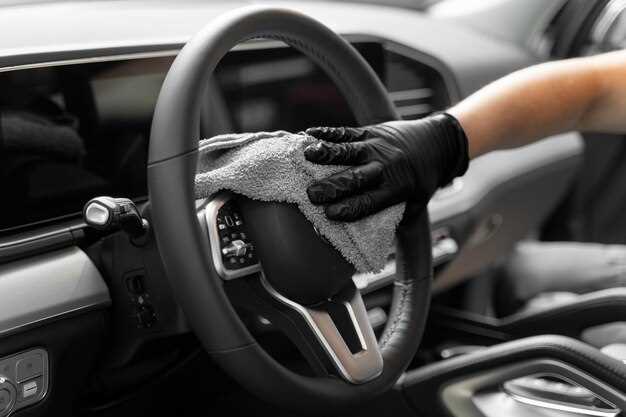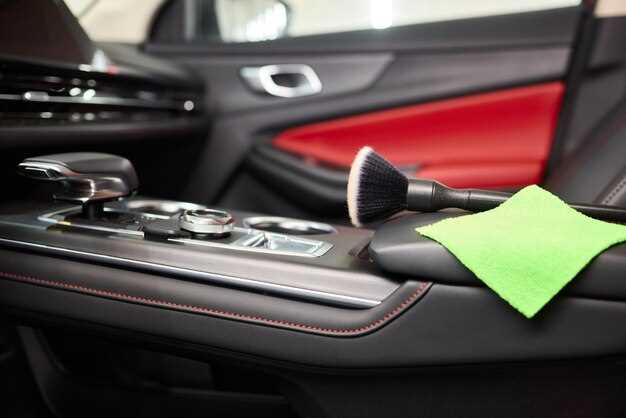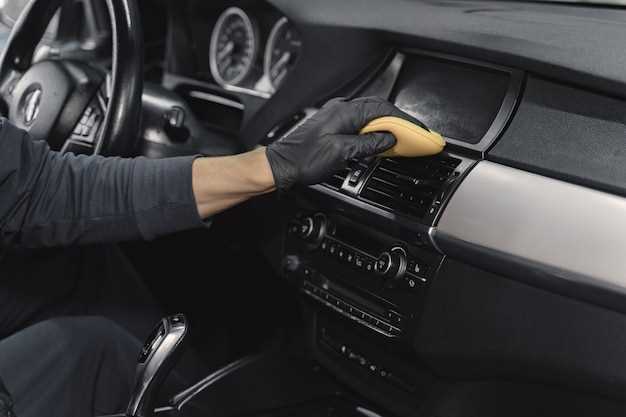
Maintaining a clean interior for your car is essential not only for aesthetics but also for the longevity of its components. Regular cleaning ensures that dust, dirt, and allergens do not accumulate, creating a healthier environment for you and your passengers. With a few practical tips, you can enhance your vehicle care routine and keep your car looking pristine.
Investing time in the care and upkeep of your car’s interior leads to a more enjoyable driving experience. From vacuuming to wiping down surfaces, understanding the best cleaning methods can vastly improve the cleanliness of your vehicle. This article shares effective techniques for various materials found in your car, ensuring that every corner shines and smells fresh.
Whether you’re preparing for a road trip or simply want to refresh your daily driver, applying these interior cleaning tips will help you maintain the value and comfort of your car. Let’s delve into the best practices that every car owner should know to keep their vehicle’s interior in top condition.
Choosing the Right Cleaning Products for Car Interiors

Selecting the appropriate cleaning products for your car’s interior is essential for maintaining its aesthetics and prolonging the lifespan of its materials. Start by assessing the surfaces you need to clean, as different materials require specific products. For leather seats, use a pH-neutral cleaner specifically designed for leather to prevent damage. Avoid all-purpose cleaners that can strip the leather of its natural oils.
For fabric upholstery, opt for a cleaner that tackles stains without leaving residues. Look for formulas that are safe for the type of fabric in your car while providing effective dirt and stain removal. Additionally, using a carpet cleaner can help refresh the carpets and mats, ensuring a clean and odor-free environment.
Dashboard and plastic trim require products that can remove dust and grime without causing fading or cracking. Choose a cleaner with UV protection to help safeguard these surfaces from sun damage. Avoid using ammonia-based cleaners, as they can harm the finish of your dashboard.
When it comes to glass surfaces inside the vehicle, a dedicated glass cleaner will provide a streak-free finish. Make sure the product is safe for tinted windows if applicable. It’s important to use microfiber cloths to prevent scratching while applying these products.
Always check labels for any restrictions or recommendations to ensure compatibility with your car’s interior. Performing a spot test on an inconspicuous area before widespread application is advisable to avoid potential damage. Overall, choosing the right cleaning products not only enhances the car’s appearance but also significantly contributes to a healthier driving environment.
Step-by-Step Guide to Vacuuming and Dusting Your Car

Maintaining the interior of your vehicle requires regular care, and vacuuming and dusting are essential components of an effective cleaning routine. Follow this step-by-step guide to ensure your car’s interior remains pristine.
Step 1: Gather Your Supplies
Before you start, collect the necessary tools: a vacuum cleaner with various attachments, a microfiber cloth, a soft brush, and an interior cleaner suitable for your car’s materials.
Step 2: Remove Trash and Personal Items
Clear out all trash and personal belongings from your vehicle. This will make it easier to access all surfaces during the cleaning process. Don’t forget to check under the seats and in the glove compartment.
Step 3: Vacuum the Interior
Using your vacuum cleaner, begin with the driver’s seat, moving to the passenger seats, and then the rear area. Use the upholstery attachment for fabric surfaces and the crevice tool to reach tight spots between seats and in cup holders. Ensure to vacuum under the mats and seat cushions for a thorough clean.
Step 4: Dust All Surfaces
Take a microfiber cloth and dust all hard surfaces, including the dashboard, center console, and side panels. Use a soft brush attachment or a handheld brush to remove dust from vents and intricate areas like knobs and buttons. This helps prevent dust build-up and keeps the surfaces looking new.
Step 5: Clean the Upholstery and Carpets
If your interior is fabric, consider using an upholstery cleaner. Apply the cleaner to any stained areas and gently scrub with a brush or cloth. For carpeted areas, vacuum again to lift any dirt stirred up during the cleaning process. If you have leather seats, use a dedicated leather cleaner and conditioner to nourish and protect the material.
Step 6: Final Touches
Once the vacuuming and dusting are complete, replace any mats and ensure all items are returned to their proper place. Take a moment to inspect your work and touch up any overlooked areas. Lastly, consider applying an air freshener to keep your car smelling fresh.
By following these steps, you will ensure your vehicle’s interior not only looks clean but also contributes to a healthier environment while driving.
Maintaining Upholstery and Leather: Best Practices
Keeping your vehicle’s interior in top condition requires attention to both upholstery and leather materials. Here are some best practices for effective cleaning and maintenance.
Regular Vacuuming: Begin by regularly vacuuming the seats and surfaces to remove dirt, dust, and debris. Use a soft brush attachment to avoid damaging the fabric or leather. This will help prevent grit from wearing down the material over time.
Spot Cleaning Spills: Accidents happen, but prompt action can save your car’s interior. For upholstery, immediately blot the spill with a clean, absorbent cloth. For leather, use a damp, soft cloth to gently wipe the area, avoiding any harsh scrubbing that could damage the surface.
Use Appropriate Cleaners: Select cleaners specifically designed for your seat materials. For upholstery, a mild fabric cleaner can effectively lift stains. For leather, choose a pH-balanced leather cleaner to maintain hydration and prevent cracking.
Conditioning Leather: Leather requires special care to stay supple. Use a quality leather conditioner every 6-12 months to nourish the material. Apply the conditioner evenly using a soft cloth and wipe away excess to prevent a greasy finish.
Avoid Direct Sunlight: Prolonged exposure to direct sunlight can fade and dry out both upholstery and leather. Whenever possible, park in shaded areas or use sunshades to protect your interior.
Professional Cleaning: Every now and then, consider seeking professional cleaning services, especially for detailed upholstery and leather care. They have the tools and expertise to deep clean without harming your car’s interior.
By following these best practices, you can effectively maintain the appearance and longevity of your car’s upholstery and leather, ensuring a pleasant and clean driving experience.



